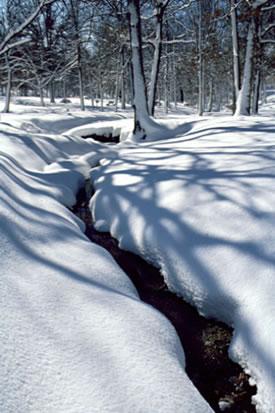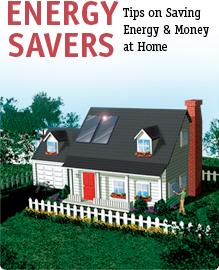
The Missouri Department of Natural Resources' Division of Energy is working to educate the public on ways to increase energy efficiency in residential and commercial buildings. The division has developed and expanded this website, which includes information such as low-cost tips for lowering heating and cooling costs. The following tips can help the public save energy and money in their residential and commercial buildings while supporting our economy and protecting our energy security.
Winter Heating Cost Information

Tips for Lowering Home Heating Costs
- Energy Savers - Tips on Saving Energy and Money at Home (U.S. DOE)
- El Ahorro de Energia (Energy Savers Spanish Version, (U.S. DOE)
Statewide Assistance Programs
- Low-Income Weatherization Assistance Program
- How Do I Apply for Weatherization?
- Low-Income Weatherization Assistance Service Areas Map
- Low-Income Weatherization, Fact Sheet--PUB2832
- Low-Income Weatherization Income Eligibility Poverty Guidelines
- Missouri Low-Income Home Energy Assistance Program (LIHEAP)/Energy Crisis Intervention Program
- LIHEAP Federal Funding Update
- Cold Weather Rule Pamphlet
- Utility Assistance Programs
Natural Gas and Propane Prices
- Missouri Energy Bulletins
- Propane Prices: What Consumers Should Know (U.S. DOE)
- Residential Natural Gas Prices: Information for Consumers (U.S. DOE)
Other Resources
Winter Heating Tips

Many of the following tips for saving energy at home are adapted from the U.S. Department of Energy's Energy Saver consumer tips web page and their Energy Saver booklet. For a Spanish language version of the Energy Saver booklet, visit Ahorre Energía.
Use Furnaces and Heaters Wisely
- Set your thermostat as low as it is comfortable. Each degree you lower your thermostat can cut your heating costs between one and three percent. A common strategy is to lower thermostat settings to 68 degrees. The lower you set it, the more you'll save.
- Turn your thermostat down 10 to 15 degrees during your sleeping hours or while you’re away to save even more on your heating bill.
- Use a programmable thermostat with your furnace to adjust the setting while you sleep, or no one is home.
- Clean or replace filters on furnaces once a month, or as needed.
- Clean warm-air registers, baseboard heaters and radiators as needed; make sure they’re not blocked by furniture, carpeting, or drapes.
- Place heat-resistant radiator reflectors between exterior walls and the radiators.
- Bleed trapped air from hot-water radiators once or twice a season. If in doubt about how to perform this task, call a professional.
Weatherize – Air Leaks Waste Energy Dollars Year Round
- Caulking and weatherstripping keeps warm air in during the winter.
- Add insulation around heat ducts when they are located in unconditioned spaces such as attics, crawl spaces and garages.
- If you see holes or separated joints in your ducts, hire a professional to repair them.
- Check to see that your fireplace damper is tightly closed when it is not in use.
- During the heating season, keep draperies and shades on south-facing windows open during the day to allow sunlight to enter your home, and close them at night to reduce the chill from cold windows.
For Long Term Savings:
- If your furnace is old, the new energy efficient models can help you save on heating bills. Your contractor should be able to give you energy fact sheets for different types, models and designs to help you compare energy usage. Look for the ENERGY STAR®.
- Adding insulation and sealing air leaks helps your energy performance in the wintertime by keeping the warm air inside.
Everyday Tips to Save Energy
The following no-cost or low-cost tips are easy ways to save energy and money all year round.
- Replace incandescent bulbs with ENERGY STAR®-qualified bulbs.
- Air-dry dishes instead of using your dishwasher’s drying cycle.
- Use a microwave oven instead of a conventional electric range or oven.
- Turn off your computer and monitor when not in use.
- Plug home electronics, such as TVs and DVD players, into power strips and turn power strips off when equipment is not in use.
- Lower the thermostat on your hot water heater; 120°F.
- Wash only full loads of dishes and clothes.
Many of these same tips are also applicable to savings on summer cooling costs.
